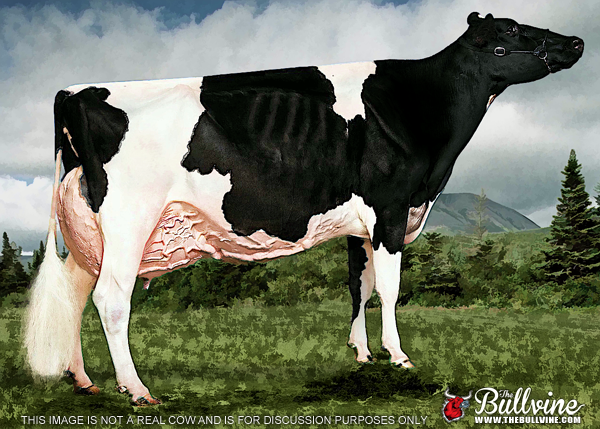Find out how UK dairy farmers can boost profits with the rising August milk prices. Check out market trends and steps to capitalize on this opportunity.
Summary: July 2024 has seen intriguing movements in the global dairy market, shaping UK milk prices and presenting significant challenges and opportunities for farmers. Robust global demand and supply constraints have driven milk prices up, and as we head into August, a continued rise is expected. This necessitates strategic actions from UK dairy farmers to optimize revenue and profitability. Essential insights and investment strategies will be crucial in navigating this volatile market, ensuring resilience and growth. The UK dairy market is grappling with rising feed costs, increased export demand, and a focus on sustainable farming methods, leading to a surge in milk prices. Demand from China and India has prompted price hikes, while post-Brexit trade agreements have facilitated exports, opening new revenue streams. Geopolitical issues like the Russia-Ukraine crisis and climatic difficulties in New Zealand and Australia have also contributed to the surge. In July 2024, reduced grass output, lower milk production per cow, increased feed demand, and post-Brexit regulation changes have led to a notable price increase.
- Global Demand Surge: Growing milk demand from countries like China and India is pushing prices upward, creating robust export opportunities.
- Supply Constraints: Reduced grass output and lower milk production per cow in the UK are contributing to supply-side limitations.
- Geopolitical Factors: The Russia-Ukraine crisis and climatic adversities in New Zealand and Australia are indirectly influencing UK milk prices.
- Post-Brexit Trade Dynamics: Recent trade agreements have facilitated increased exports, providing new revenue streams for UK dairy farmers.
- Rising Feed Costs: UK farmers are facing increased feed demand and higher costs, necessitating strategic adjustments to maintain profitability.
- Sustainability Focus: Sustainable farming practices are increasingly essential, with market trends steering towards environmentally-conscious operations.
- Regulatory Changes: Adjustments in post-Brexit regulations are impacting operational dynamics and costs for dairy farmers.

Entering August, the UK dairy market is negotiating a complex environment shaped by dynamic factors such as increasing feed costs, increased export demand, and a focus on sustainable farming methods, all driving higher milk prices. Dairy farmers who wish to optimize income and profitability must first understand these trends and demand a strategic plan based on the most recent market data. By developing and implementing a strategic plan, UK dairy producers can monitor current developments to protect their herds from volatility and boost profitability.
| Factors | July 2024 | Projected August 2024 | Impact on Dairy Market |
|---|---|---|---|
| Feed Costs | £285/ton | £295/ton | Increases production costs, affecting overall profitability |
| Export Demand | High (15% increase) | Very High (20% increase) | Boosts milk prices due to higher demand from international markets |
| Sustainable Farming Initiatives | Adoption Rate: 45% | Adoption Rate: 50% | Initial costs but long-term savings and higher market value |
| Milk Prices | £0.32/liter | £0.34/liter | Increase in revenues for farmers |
Surging Milk Prices! Uncover the Factors Driving This Unprecedented Boom
The recent surge in UK milk prices is a testament to the positive strides made by the global dairy industry. The solid demand from across the world, especially from China and India, has led to significant price hikes. The higher affluence and evolving food preferences in these nations have driven this demand, and the UK dairy industry is playing a pivotal role in meeting it.
Improving export prospects is also essential. Premium dairy products from the United Kingdom are in great demand worldwide, notably in the European Union and Southeast Asia. Post-Brexit trade agreements have allowed more accessible exports, opening up new cash sources for UK farmers.
Geopolitical issues have supplied extra impetus. The crisis between Russia and Ukraine has changed supply chains, raising demand for dairy goods throughout Europe, including the United Kingdom. Furthermore, climatic difficulties in New Zealand and Australia have temporarily limited production, which benefits UK markets. Rising worldwide demand, improved export routes, and geopolitical shifts have increased milk prices for UK producers. This offers a promising foundation for future development and profitability.
A Perfect Storm: How July’s Market Trends Signal Unprecedented Challenges and Opportunities for UK Dairy Farmers
In July 2024, the milk market saw a price increase, bringing obstacles and possibilities for UK dairy producers. The hot, dry summer has decreased grass output and milk production per cow. This has increased the demand for additional feed, which has become more costly due to global grain market concerns and rising shipping costs.
Post-Brexit regulation changes and customs inspections have raised the cost of imported feed, veterinary supplies, and equipment. Additionally, labor shortages are raising salaries and increasing operating costs.
Despite these challenges, practical actions may assist in controlling income. Efficient feed and water utilization, new farming practices to increase milk output, and diversification of supply sources are critical for success in the present market.
Brace for Impact: August 2024’s Milk Price Surge Demands Strategic Action from UK Dairy Farmers
Milk prices are predicted to climb even more in August 2024, owing to increased worldwide demand and restricting local supply. We expect a 4-5% average rise, driven by a projected worldwide dairy market growth rate of 3.2%, a significant increase from the prior projection of 1.15%. Emerging markets in Southeast Asia and Africa want more dairy, which contributes considerably to the rise. Climate uncertainty and geopolitical concerns impacting feed costs may drive prices upward.
Environmental reasons and regulatory developments in crucial dairy exporting nations have resulted in a turbulent but potentially lucrative environment for UK dairy producers. Understanding these forecasts is critical for developing ways to maintain financial stability. Farmers should assess their production capacity and consider expanding or investing in sustainable techniques to profit from increased pricing. Embracing technology to improve efficiency and examining supply chain efficiencies will be critical to revenue growth.
Here are Key Actionable Insights:
As UK dairy producers confront rising milk prices, managing the market effectively is critical for maximizing profitability. Here are crucial actionable insights:
- Optimized Herd Management: Effective herd management is critical. Cow health must be carefully monitored to ensure regular veterinarian checkups and preventative treatment. Advanced breeding procedures may improve milk production and quality. Consider investing in genetic breakthroughs that have shown improved lactation performance.
- Feed Optimization: Rethink your feeding strategy. The quality and content of feed have a direct influence on milk output. Choose nutrient-dense feed that balances carbs, proteins, and necessary minerals. Precision feeding technology may help optimize this process, ensuring that each cow obtains the optimal nutritional intake while minimizing waste.
- Cost Control: Examine your operating costs thoroughly; use technology for more effective farm management to save expenses. Automated milking, feed delivery, and monitoring systems may save labor expenses while increasing uniformity. Keeping an eye on market trends helps make intelligent purchase choices, including getting bulk feed or supplies at attractive pricing.
- Market Intelligence: Stay current with market trends and predictions. Aligning milk production plans with peak pricing times may help increase profitability. Diversifying milk products—from fluid milk to cheese, butter, or yogurt—could result in additional income streams, particularly in specialist markets like organic or A2.
In summary, profiting from increasing milk prices requires combining conventional knowledge and cutting-edge technology. UK dairy producers may survive and prosper in a changing market scenario by concentrating on optimal herd management, accurate feed methods, and strict cost controls.
Investment Strategies UK Dairy Farmers Can’t Afford to Ignore
As we navigate these difficult yet exciting times, UK dairy producers must consider numerous investment alternatives to increase profitability. One potential route is technological advancement. Implementing modern milking equipment and data-driven herd management tools may improve efficiency and output, increasing income. Furthermore, this technology may assist in monitoring animal health more accurately, lowering veterinarian expenditures and increasing production.
Another critical investment is diversification into value-added goods. Profit margins may be increased by processing milk into cheese, yogurt, or other specialist dairy products. These products often command premium pricing in domestic and international markets, acting as a buffer against the volatility of raw milk prices.
Finally, discovering new markets may lead to extra income sources. With favorable developments in the global dairy sector, expanding into export markets or specialist areas such as organic or free-range goods provides significant growth potential. Expanding market reach stabilizes revenue and prepares farmers to capitalize on rising consumer demand in several places.
Mastering Dairy Market Volatility: Essential Risk Management Strategies for UK Farmers
Risk management is critical for success in the unpredictable dairy sector. UK dairy producers experience price swings and market instability, making a robust risk management strategy essential for long-term profitability and survival. Without it, your farm’s financial health could be at serious risk.
- First and foremost, it is critical to hedge against price volatility. Forward contracts may lock in milk and other dairy product prices, shielding you from unexpected market reductions. These contracts are helpful, particularly when short-term volatility is anticipated.
- Options trading provides an additional degree of protection. Purchasing put options enables you to sell milk at a fixed price, which cushions against price declines. Call options allow you to profit from price rises, guaranteeing that you maximize income under favorable market circumstances.
- Diversifying your revenue sources is also beneficial. Adding value-added products to your portfolio, such as cheese, yogurt, or butter, may provide additional income streams while mitigating the effects of shifting milk costs. Investigate specialized markets such as organic or specialty dairy products, which often command higher, more consistent pricing.
- Liquidity management is another critical component. A sufficient cash reserve gives a buffer during difficult times when milk prices fall or input expenses suddenly surge. This buffer helps to ensure operational stability.
- Finally, precision agricultural technology may provide data-driven insights to improve decision-making. Real-time market data, predictive modeling, and automated milking systems may help maximize production efficiency and profitability. Use data to quickly adjust to market changes and keep your operations agile and responsive.
Addressing price volatility requires a diversified risk management strategy. Financial instruments, diversification, liquidity management, new technology, and insurance solutions may help you safeguard your farm from possible dangers while capitalizing on growing possibilities in the dynamic dairy market.
The Bottom Line
We have looked deeply into the factors causing the recent increase in milk prices, revealing how several July 2024 market trends create unique difficulties and exciting prospects for UK dairy producers. With August estimates predicting further growth, it is clear that intelligent investment and proactive risk management are critical. Farmers must remain aware, watch market movements, and modify their strategies to capitalize on these advantageous circumstances. Dairy farmers may increase their income and profitability by harnessing professional insights and taking advised steps in this volatile market. Immediate action, such as reevaluating investment plans or improving risk management techniques, can guarantee that farmers survive and prosper in the face of continuous changes. The time to act is now—stay ahead of the curve, capitalize on trends, and ensure your farm’s future success.













